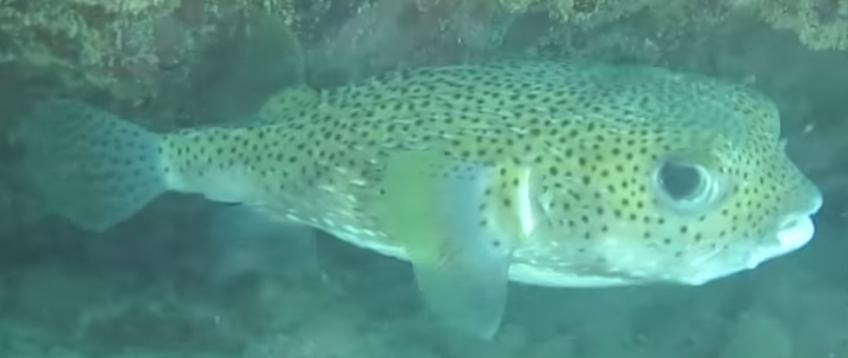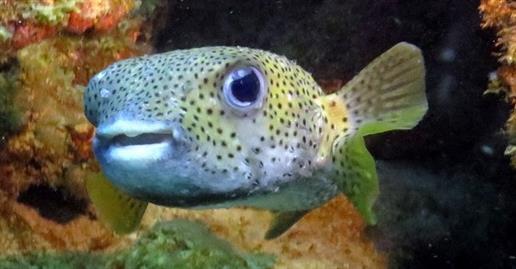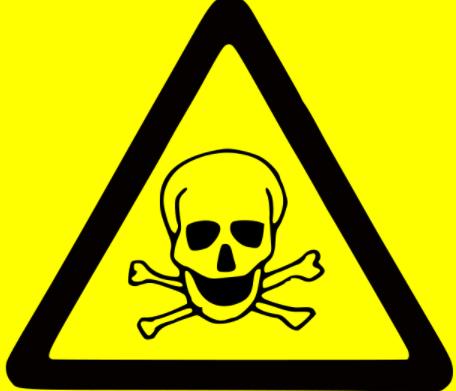



Diodon hystrix
| Ecological Descriptors |
||||
| Habitat | Size (cm) | Diet | Behaviour | Sex |
| Dem (Co, R, Man) | 90 | Mol, Ech, Cru | I | F |
General:
Although confused by some with Pufferfish (Tetrodontidae [="four teeth"]), Porcupinefish (Diodontidae [="two teeth"]), differ in their beak-like teeth are fully fused, lacking a noticable groove and have obvious spines on the body. Both families have the ability to enlarge themselves as a predator deterrent.
Description:
Spines on front of head shorter than those behind pectoral fins. Light grey brown dorsally shading to white ventrally. Upper body and dorsal, anal and tail fins with small black spots. body without large dark blotches.
Ecology
A reef-associated species occurring to depths between 2 and 50 m, but is usually found between 3 and 20 m. Adults are demersal and commonly seen in caves and holes in shallow reefs, where they find their prey. Juveniles can be found in mangrove habitats and to about 20 cm are pelagic. They are carnivorous, nocturnal feeders that possess strong jaws and teeth fused together for cracking open the exoskeleton of its prey such as sea urchins, gastropods, and hermit crabs, known as durophagous feeding. They possess rubbery lips protecting them from broken shells while feeding.
Life Cycle
Broadcast spawner, meaning both sexes mate with many different partners during spawning events. Mating within this species has not been observed in the wild or in captivity, but a closely related species Balloonfish / Diodon holocanthus has had its mating observed. The process of breeding begins at an approximate temperature of 25oC (mostly during May-August) where multiple males mate with multiple females. The female is brought up to the water surface and if she possesses eggs they would be released. The males involved (around four to five) contribute sperm. Has lived to 10 years in captivity.
Although confused by some with Pufferfish (Tetrodontidae [="four teeth"]), Porcupinefish (Diodontidae [="two teeth"]), differ in their beak-like teeth are fully fused, lacking a noticable groove and have obvious spines on the body. Both families have the ability to enlarge themselves as a predator deterrent.
Description:
Spines on front of head shorter than those behind pectoral fins. Light grey brown dorsally shading to white ventrally. Upper body and dorsal, anal and tail fins with small black spots. body without large dark blotches.
Ecology
A reef-associated species occurring to depths between 2 and 50 m, but is usually found between 3 and 20 m. Adults are demersal and commonly seen in caves and holes in shallow reefs, where they find their prey. Juveniles can be found in mangrove habitats and to about 20 cm are pelagic. They are carnivorous, nocturnal feeders that possess strong jaws and teeth fused together for cracking open the exoskeleton of its prey such as sea urchins, gastropods, and hermit crabs, known as durophagous feeding. They possess rubbery lips protecting them from broken shells while feeding.
Life Cycle
Broadcast spawner, meaning both sexes mate with many different partners during spawning events. Mating within this species has not been observed in the wild or in captivity, but a closely related species Balloonfish / Diodon holocanthus has had its mating observed. The process of breeding begins at an approximate temperature of 25oC (mostly during May-August) where multiple males mate with multiple females. The female is brought up to the water surface and if she possesses eggs they would be released. The males involved (around four to five) contribute sperm. Has lived to 10 years in captivity.
Porcupinefish
Synonyms:
Spotfin Porcupinefish
Spotfin Porcupinefish


Porcupinefish



70
81

239


POISONOUS

